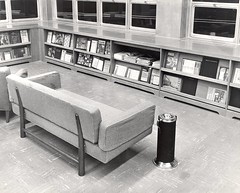
Speakers: Jennifer Bazeley (Miami University) & Nancy Beals (Wayne State University)
Despite all the research on what we need/want, but no one is building commercial products that meet all our needs and addresses the impediments of cost and dwindling staff.
Beals says that the ERM is not used for workflow, so they needed other tools, with a priority on project management and Excel proficiency. They use an internal listserv, UKSG Transfer, Trello (project management software), and a blog, to keep track of changes in eresources.
Other tools for professional productivity and collaboration: iPads with Remember the Milk or Evernote, Google spreadsheets (project portfolio management organization-wide), and LibGuides.
Bazeley stepped into the role of organizing eresources information in 2009, with no existing tool or hub, which gave her room to experiment. For documentation, they use PBWiki (good for version tracking, particularly to correct errors) with an embedded departmental Google calender. For communication, they use LibGuides for internal documents, and you can embed RSS, Google Docs, Yahoo Pipes aggregating RSS feeds, Google forms for eresource access issues, links to Google spreadsheets with usage data, etc.. For login information, they use KeePass Password Safe. Rather than claiming in the ILS, they’ve moved to using the claim checker tool from the subscription agent.
Tools covered:
- Google Calendar
- Google Docs (includes forms & spreadsheets)
- PBWiki
- LibGuides
- Yahoo Pipes
- WordPress
- KeePass Password Safe
- PDF Creator
- EBSCOnet
Others listed:
- Blogger (blog software)
- Mendeley (ref manager)
- Vimeo (videos)
- Jing (screenshot/screencast)
- GIMP (image editor)
- MediaWiki (Wiki software)
- LastPass (password manager)
- OpenOffice (software suite)
- PDF Creator (PDF manipulation)
- Slideshare (presentation manager)
- Filezilla (ftp software)
- Zoho Creator (database software)
- Dropbox (cloud storage)
- Github (software management)
- Subscription agent software (SwetsWise, EBSCOnet)
- Microsoft Excel / Access
- Course Management Software (Moodle, Sakai, Blackboard)
- Open Source ERMS: ERMes (University of Wisconsin-La Crosse) & CORAL (University of Notre Dame)




